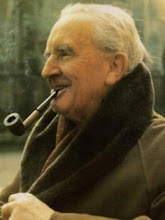
Sto, Stare, Steti, Statum! I enjoyed doing those chants (the Four Principle Parts of the Verb) in Latin classes; I stand, To stand, I stood (or more accurately, I have stood), the Supine has no direct equivalent in English, but I suppose Statum could mean something like ''the act of standing'' or ''in order to stand'' or in it's Ablative form statu ''in standing.'' Anyway, today is the Feast of the Seven Sorrows of the Blessed Virgin Mary, and it has its own Sequence, the Stabat Mater, which is one of the most exquisite of the five remaining in the Roman Rite (although it was not, incidentally, composed as a Sequence). Even in the ''poetic'' English version the Stabat Mater is quite moving to hear; we have it at Blackfen during the Stations of the Cross on Friday evenings during Lententide. My favourite version is Anerio's twelve voice Stabat Mater, which is an example of the trend in Rome at the end of the 16th century towards the use of immense vocal force in choral works (a reflection of the ''triumphal'' spirit of the Counter-Reformation), which culminated in the grand Baroque styles of the 17th century. Anerio's Stabat Mater is a masterpiece of harmonic rhythm; its clever manipulation of rhythm and its texture never leave me bored, in spite of its length. I am in fact listening to it as I write!
Although Our Lady's Seven Sorrows spanned her life with her Divine Son, the culmination of her sorrow was when she stood near the Cross weeping while her Son was hanging. Devotion to Our Lady's Sorrows is a praiseworthy devotion, and is a clear indication of the ''universal'' dimension of Catholic orthopraxis. The Church is Catholic in all senses of that term, encompassing (rightly) the sad as well as the joy, and sometimes blending them together, if that doesn't sound too odd - such as the Rogation Days, the use of Violet Vestments for them, and even, arguably, the Rose Vestments for Gaudete and Laetare Sundays - something there to remind us that joy is qualitatively like sorrow, since true joy and true sorrow induce the same reaction - tears (or at least they perhaps ought to). Did not Christ say that our sorrow would be turned into great joy? And does not St John write that God will wipe away all the tears of our eyes? The joy, Christian joy as Tolkien put it, becomes therefore all the more poignant because we are at once aware of what life is like without it. And so, in these days of Darkness and profound Apostasy, it is fitting that we unite all our sorrows to those of Our Lady at the foot of the Cross, for only then will they be made truly Holy - when on the Day of Judgement, we arise again from the Dead facing Jerusalem and make account for all our misdeeds.

Singulare Ingenium. I salute you. First-Class blogging. Thank you for the in-depth reading on this most moving Day of Our Lady's Sorrows.
ReplyDeleteA moving post. Many thanks for this.
ReplyDelete